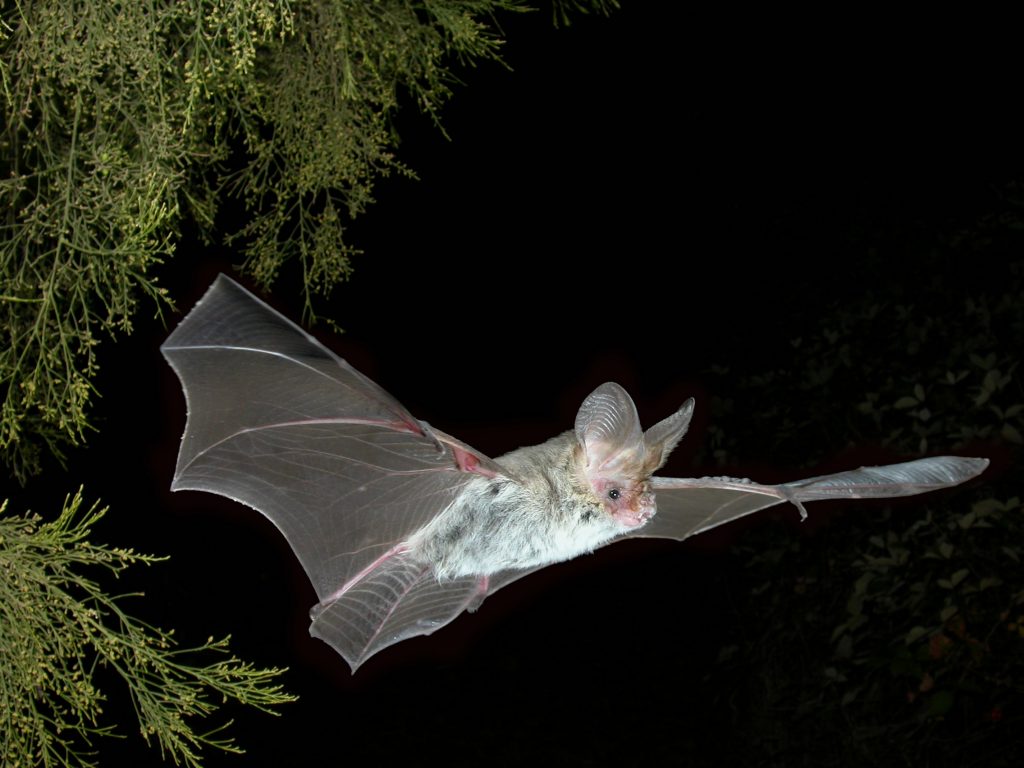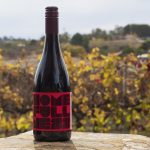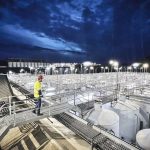Image: Nyctophilus geoffroyi, Lesser long-eared bat
A new podcast series, by the Barossa Grape & Wine Association (BGWA), has been launched with expert growers discussing the potential benefits of microbats and other wildlife in the vineyard.
The series, called Wildlife for Wine (W4W), brings together a collection of stories about how wildlife (birds, insects, spiders and microbats) can play important ecological roles in vineyards.
Since 2018, over 12,000 native species have been planted via Barossa’s community planting days and individual landholders’ efforts, under BGWA’s ‘Creating Resilient Landscapes’ project – of which Wildlife for Wine is a part.
Learning about what beneficial wildlife need, and providing habitat and resources for them, has been a focus of the program.
Consumers demand environmental credentials
Viticulture is a major industry within the Barossa region, with worldwide recognition and branding.
“By increasing biodiversity, revegetating the Barossa’s vineyards reduces the need for chemicals as beneficial birds, insects and spiders prey on pest insects and birds,” said Nicki Robins, BGWA viticultural development officer.
“This also reduces diesel usage and soil compaction from tractor passes and helps improve soil health, which in turn improves water and nutrient infiltration.
“These viticultural best practices are becoming increasingly important as customers and consumers of Barossa wine demand to know the product is originating from an environmentally-responsible source,” continued Robins.
Robins says revegetation also reduces erosion, and improves the aesthetic and value of properties.
Barossa winegrape grower Evan Gobell, who features in the W4W podcast series, is amongst a growing number of vignerons who connect the health of the natural environment with the long-term viability of winegrape production.
“We’re not just farmers, we’re conservationists as well,” said Gobell.
Grapes and the right birds can co-exist
Wildlife advisor Ian Falkenberg surveyed properties in northern Barossa as part of the project. He says, typically, birds in vineyards get a bad rap for their potential to eat grapes.
At Falkenberg’s property, he found 44 bird species with only 6 of them being grape-eating species.
He explains this is a myth that needs busting, as the benefits of pest insect control, biodiversity and landscape resilience outstrip the risks.
Gobel agreed, saying he has found that crop damage from birds has decreased under his six-year revegetation program.
Survey work has found revegetated sites with a good understorey mix tend to encourage insectivorous birds.
The W4W group has also had success with the installation of perches, attracting birds of prey.
Mitigating a changing climate
A further aim of the project is to improve resilience of the landscape, as the Barossa faces a hotter and drier climate, stressing the natural environment and its winegrape production.
Climate change predictions for the region in 2015 state:
- by 2030, temperatures in the region will rise by 0.6 – 1.0°C (and by 1.5 – 2°C by 2070);
- frequency and intensity of heatwaves will increase; and
- annual rainfall will decline by 2 to 5% by 2030 (and by 10 to 20% by 2070).
(Regional Development Australia – Barossa: Climate Change Adaptation Plan 2015)
W4W is now being expanded, with continuing funding through the Northern and Yorke Landscape Board.
“Finally, we’re starting to realise you actually need native vegetation, and if you want biodiversity for the environment to be sustainable, then you’ve got to have what’s meant to be here, here,” said Gobell.
The three-part W4W video and podcast series features Barossa growers Evan Gobell and Shawn Kalleske, and Matthew Pick of Seppeltsfield talking with agroecologist Dr Mary Retallack, wildlife adviser Ian Falkenberg and microbat expert Terry Reardon.
Watch and listen here.
Are you a Daily Wine News subscriber? If not, click here to join our mailing list. It’s free!
















